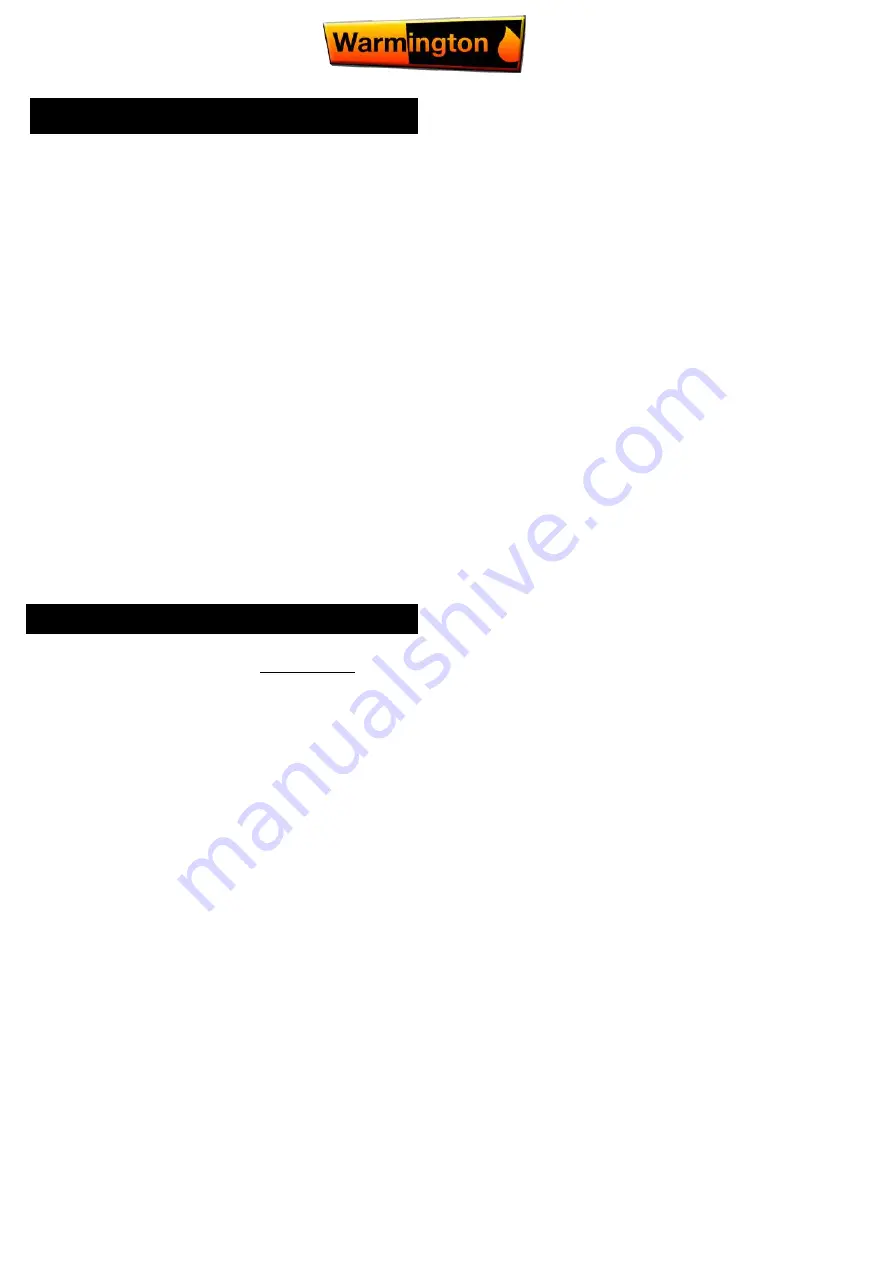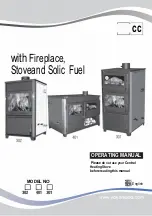
5 April 2019
Due to continued product improvement, Warmington Ind LTD reserves the right to change product specifications without prior notification.
All Dimension are in mm
………….
Copyright ©
2
Prior to Construction and Installation
: Important Notes
:
Installation to be done to AS/NZS 2918:2001 Standards.
Installation to be done to Manufacture
’
s Specifications.
All Installations require a Council Consent No/Permit.
For special requirements concerning materials (Timber, Mantle and Surrounds) within close proximity of Warmington products, please contact
your local Warmington Technical Consultant.
Stage 1:
Frame Construction Procedure by Builder.
Mark out Flue Centre.
Mark out Firebox Clearance requirements.
Construct Plinth, to required height if necessary. *
Stage 2:
Install Procedure by Certified
“
Warmington Installer
”
only or see www.homeheat.co.nz go to members & follow Instructions to
get a Certified NZHHA SFAIT Installer .
Install Fire to Plinth .
Install Adaptor to Firebox .
Install Freestanding Cabinet around Firebox
Install Freestanding Flue System .
Install Flashing & Cowl System.
Stage 3:
Finishing Procedure by Builder.
Construct Hearth to required Thickness.
* Note:
Certified NZHHA Installer can Install Hearth and Plinth also .
Ensure that the Warmington Fire and Flue System is Swept annually or more frequently if required.
To Sweep Flue and Firebox :
Cover Front of Fire with sheets.
Remove Cowl from Top of Chimney.
Sweep from the Top, down the Flue.
Remove all Soot and Ash.
Ensure Cowl and Bird Protection is clean and replaced.
Visually Inspect Fireplace and Flue System .
INSTALLATION ORDER OF OPERATIONS
POINTS TO CONSIDER PRIOR TO INSTALLATION
L
ocation of the Fire. Open fires are better located at one end of a room or area, as they project the heat away from their opening.
The Topography of the land .
The slope and position of the land in relation to the home has a bearing on how the wind will interact with the fire and flue system. Care needs
to be taken to ensure that the flue termination is in the correct position to maximise performance.
The Prevailing Wind.
Care needs to be taken to ensure that the flue termination is in the correct position as wind and gusts that hits the flue and cowl system may
overcome the cowl and draft back down the flue into the home. This can be a combination of down draft and high pressure.
Hearth and Plinth:
The Height of the Hearth off the Floor. The Finishing that is to be used on the Hearth is to be allowed for at the design stage.
Note : Ensure Air Intake at Base of Firebox is not blocked or restricted .
Positioning of the Flue System:
There is a maximum distance that an offset flue can be Installed . Reference to AS/NZS 2918:2001 .
Flue And Fire Clearance:
To be maintained to the Manufactures Instructions &/or Comply with appropriate Standards & Building Codes .
Pressure Differential, Venting & External Air into the Building
:
All fires need air to burn and draw correctly, Kitchen Fans, Air Conditioning units, High Wind Zones, Naturally forming Draft spaces, can all have
an effect on the pressure difference from inside the building to the outside. A lower pressure in the building may induce a draft down the flue
system and back into the building causing the fire to smoke or spill into the building.
Care needs to be taken at the design and installation
stage to adequately vent the building, or some mechanical system to ensure that there is always a neutral or positive pressure at the
fireplace and a negative pressure at the flue outlet.
This will ensure that the draft in the flue system is always to the outside.
“
CAITEC AIR
”
the limits and requirements. See details in these Spec
’
s
Wind Noise:
You may encounter wind noise in some installations. It is recommended
to use an enclosed chase with a chimney pot to help
reduce noise. There will always be some noise from the flue systems of all fireplaces.






























